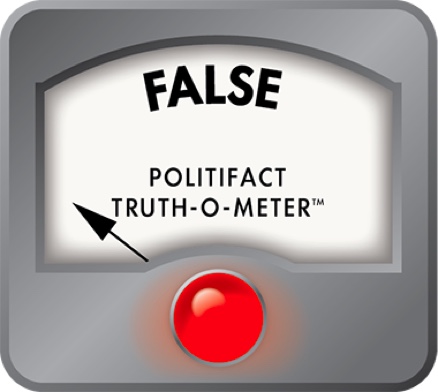
On top of consulting the district’s crime dashboard, we asked the White House if it had evidence we should consider about Trump’s district homicide statistics.
Spokesperson Taylor Rogers told PolitiFact in an email that Trump’s action “has stopped the senseless killings, removed over one thousand violent criminals from the streets, and overall crime has decreased.” The White House did not share additional data.
Trump’s underlying metric for his shifting statistic is off: There was a stretch of more than two weeks earlier this year with no murders. And crime statistics experts say that while a homicide-free week is positive, it doesn’t say much about crime trends, safety or public perceptions of safety.
Washington, D.C., has had stretches of around a week — or more — without homicides
The district’s crime dashboard shows a homicide Aug. 11, the date Trump issued his executive order declaring a crime emergency in Washington, D.C. The next reported homicide took place Aug. 13. At the time Trump made his statements, that was the last one in August. (One note: The dashboard is frequently updated when police learn of new homicides, so the numbers can change.)
For 2025, the longest stretch without a homicide happened about six months ago: A homicide occurred Feb. 24 and the next one was sometime between the night of March 13 and the early morning hours of March 14, which is a stretch of about 16 days.
There were no homicides May 4 through May 11, an eight-day span.
In 2024, there were three reported homicides Aug. 3 and then the next one occurred Aug. 13, which means there were no homicides for nine days. That example shows a shortcoming about Trump’s statement: There could be one homicide per week for two weeks in a row, or multiple homicides in one week followed by a week with none, so a homicide-free week may not mean much in the context of a longer stretch of time.
“It is not particularly uncommon for Washington, D.C., to go more than a week without a murder,” said Thomas Abt, founding director of the University of Maryland’s Center for the Study and Practice of Violence Reduction.
Abt worked in the Office of Justice Programs at the Justice Department during former President Barack Obama’s presidency.
A week doesn’t constitute a crime trend
A week of data doesn’t amount to a trend or tell us much about overall safety, experts said.
Homicides are far less common than other crimes: There had been about 101 homicides reported in Washington, D.C., in 2025 as of Aug. 25. (A new reported homicide occurred Aug. 26.) In the same time, Metropolitan Police data shows, there have been nine times that number of robberies and thousands of thefts. (The district’s data uses the word “homicide,” which is the legal term referring to a person killing another person, including lawfully. Trump uses the more narrow term “murder,” which means an unlawful intentional killing.)
“Homicides are already pretty rare,” said Tahir Duckett, executive director at the Center for Innovations in Community Safety at Georgetown Law. “So when the murder rate drops, it doesn’t necessarily make people feel more safe in their day to day lives or change their behavior.”
Research shows that people’s feelings about safety are only loosely connected to actual crime rates.
“Other factors — everything from neighborhood design, lighting, and the availability of green spaces to their access to health care — also play a role,” Duckett said in an email, citing research.
Experts who study crime generally compare crimes and crime rates over longer periods. And comparing this year-to date with the same time period in the previous year showed that violent crimes including murder dropped before Trump’s actions.
“Every day without murder is a good day, but it’s not a particularly meaningful way of measuring crime,” Abt said.
There is a degree of year-to-year volatility with homicide numbers based on factors such as a shooter’s skills, the type of weapon and if the victim received medical help in time, said Northeastern University criminology professor James Alan Fox.
“One year is not enough time to establish a reliable trend; certainly a week or two is even less reliable,” Fox said.
Statistically, we should expect a few homicide-free weeks. Based on the 101 reported homicides year-to-date as of the time that Trump spoke, that averaged roughly three per week. That means there is a 5% chance that a week would have no homicides, Fox said. Over a year, that would equal two to three weeks with no homicides.
Our ruling
Trump said Aug. 25, “We always have a murder a week” in Washington, D.C.
That ignores that a two-week stretch earlier in 2025 had no reported homicides.
Criminologists caution that one week of data does not say much about the crime trends. Crime experts generally compare crimes and crime rates over longer periods, such as years.
We rate this statement False.
RELATED: Trump exaggerates Washington, DC, crime while ordering police takeover and National Guard deployment
RELATED: How does Washington, D.C.’s homicide rate compare with other countries?
